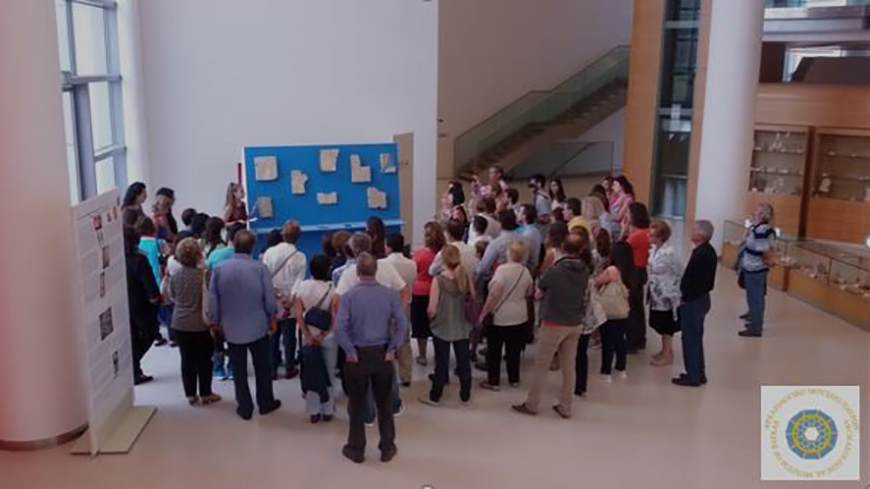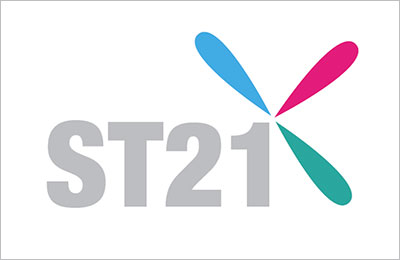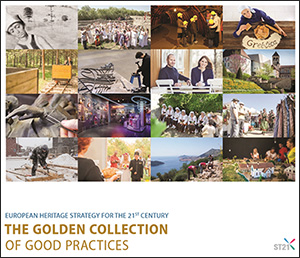Location of the initiative:

Initiator
The Patras Museum
Relation to Strategy 21 Recommendations:
K5 - diversify training systems for heritage professionals
Time span of the initiative:
Start date: January 2015 (peak in 2019) / End date: ongoing
Motivation / Methodology
Usually an Archaeology student's curriculum is concluded with his/her participation in an excavation. Our initiative aims to demonstrate that museum galleries offer a peer alternative. More important, a Museum offers stimulation for students of various disciplines. Always under proper instruction, the variety of exhibits and the opportunity for close observation allow the trainees to learn how to 'read' e.g. a piece of sculpture, to identify surface treatment and tool marks, to evaluate criteria of dating and to view the object in a holistic approach. In a museum, students of Archaeology can learn find recording and inventorying, drawing and documentation, as effectively as on any excavation site.
Our project began with specialized seminars on Roman sculpture, history of art and epigraphy. "Stone Pages of History" is the title of our post-graduate seminar in co-operation with the Classics Department of Patras University, postponed due to the Covid19 situation. Soon our project evolved into the training of students about to graduate from the Department of Archaeology. We arranged in-situ courses on exhibition design and installation, familiarizing the trainees with finds coming out of the storerooms for the very first time. Under our systematic instruction and teaching, interns were encouraged not only to attend but also to actively participate in the exhibits' public presentation, which is innovative at national level. The rumour of 'good practice' performed in Patras Archaeological Museum spread quickly; Erasmus students from Cyprus applied for internship but we also received applications by Geology students, whom we assigned with the task of categorizing (by macroscopic observation) the provenance of building materials, such as the stones used for mosaics, opus sectile floors etc. Memorable was our co-operation with the Department of Architecture of Patras University: together with their tutors, we trained eight different groups of students, also instigating team spirit. The teams were initiated into aspects of ancient Greek art and exhibition design, and they faced a ground-breaking assignment: to design alternative versions of displays on a given site. This resulted in a number of different plaster models, potentially usable as the blueprint for an actual exhibition.
The specialized seminars we keep conducting are being attended by members of foreign academic institutes, too; colleagues from Cologne, Bretagne and the British School of Athens visited us in 2019. The 'trilogy' of mosaics from the aristocratic suburbs of Roman Patras (a periodical exhibition) was particularly appealing to the Department of Theatre Studies, who attended our related seminar on the Hellenistic origins of residential architecture. The seminar walked them through the entire preparation for display. From the open-air exhibition "Prayers in the Museum Garden", with inscribed tombstones from the Jewish cemetery of Patras in the 16th-17th century, the students learned that an archaeological museum should be diachronic, illuminating all periods of history, all facets of humanity. Our latest seminar focused on the crossing routes of culture and a dialogue of arts expressed through the contact and interaction of Mediterranean people in antiquity. Documentation was based precisely on the exhibits of a periodical archaeological exhibition we organized, titled "Mediterranean Patras".
Our primary tool for in-situ training is the collection of antiquities itself. By drawing on particular details of each exhibit, by analysing the methods of deciphering it and eventually by building a presentation to communicate the outcome, we advance the University students' educational level, their perception and assimilation capacity. An additional advantage is their opportunity to attend also the installation of a contemporary art exhibition, which expands their perspective significantly.
Obstacles / Barriers
The educational background of all students in a group is hardly ever the same. In order to balance this, we encourage team spirit, developing in parallel a sense of noble emulation between students, urging them to explore all of their potential and to considerably improve themselves.
Change / Impact
A major impact of our initiative is the realization that students of various disciplines can be accommodated in museum premises. The false impression that exhibits are silent, contrasting the vitality of an excavation site, has proven entirely unjust. Questions raised by the objects on display never end; they provide a springboard for students to learn how to 'read' art and aesthetics.
Lessons learned
The role of a museum is only partially accomplished with the installation of an exhibition; in fact, this is the starting point, where the museum begins to fulfil its educational role. It should not be regarded as a shell housing objects on display. Our project verified that the key rests in knowing the appropriate approach, knowing how to disclose and communicate each artefact's secrets.
Online resources
- http://odysseus.culture.gr/h/1/eh151.jsp?obj_id=3248
- http://odysseus.culture.gr/h/4/eh41.jsp?obj_id=17681
Contact information
Contact person: Partida Elena
Organisation: Ephorate of Antiquities of Achaea, Archaeological Museum of Patras
Email: [email protected]
Phone: +302613 616158
Website: www.ampatron.gr
Source of financing
Public





